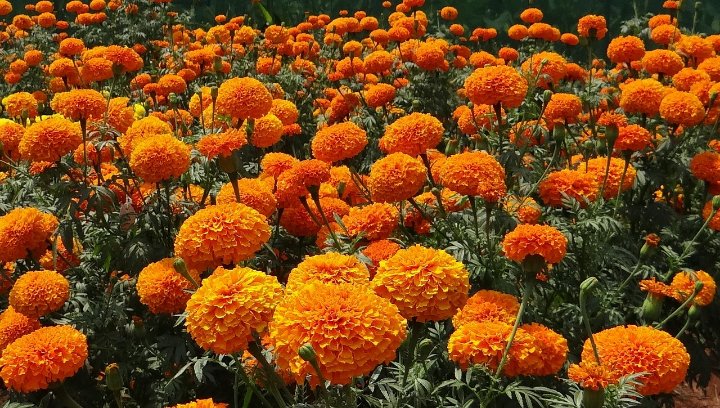Marigolds are beloved annual flowers cherished for their vibrant colors, easy maintenance, and ability to repel pests from the garden. Whether you’re a seasoned gardener or a beginner, growing and caring for marigolds is a great way to add beauty and charm to any landscape.
Best Marigold Varieties
| Image | Name | Rating | Shop |
|---|---|---|---|
 | Annual Tagetes Patula French Marigold |  | |
 | African Marigold ‘Crackerjack Mix’ |  | |
 | Kilimanjaro White African Marigold Flower Seeds |  |
Marigolds Hardiness Zones
Marigolds are adaptable plants that thrive in a wide range of climates, spanning USDA hardiness zones 2-11. While they are perennial in warmer zones, they are typically grown as annuals in colder regions, where they can be easily replanted each spring for continuous blooms.
How Much Sun Do Marigolds Need
Marigolds thrive in full sun, requiring at least six hours of direct sunlight per day to flourish. Plant them in a location where they can soak up the sun’s rays and bask in its warmth. Adequate sunlight ensures robust growth and abundant flowering throughout the growing season.
Marigolds Soil Requirements
When it comes to soil, marigolds prefer evenly moist, well-drained soil with a slightly acidic to neutral pH ranging from 6.0 to 7.0. Amending the soil with organic matter, such as compost or peat moss, can help improve soil structure and fertility, ensuring healthy root development and vigorous growth.
Marigolds Plant Spacing
Marigold plants come in various sizes, ranging from compact varieties that grow 4 inches tall to tall varieties that reach up to 48 inches in height. When planting marigolds, space them accordingly to allow for adequate air circulation and room for growth. Proper spacing ensures that each plant has enough space to develop fully and produce an abundance of blooms.
Marigolds Temperature Requirements
Marigolds are heat-loving plants that thrive in warm temperatures, making them perfect for summer gardens. They can tolerate a wide range of temperatures but may suffer in extreme heat or cold. Plant them after the danger of frost has passed in the spring and provide consistent temperatures within their preferred range to promote healthy growth and flowering.
Marigolds Fertilizer Requirements
Marigolds are relatively low-maintenance plants that typically don’t require supplemental fertilizer. However, if your soil is poor or lacking in nutrients, you can apply a balanced fertilizer at planting time to provide essential nutrients for healthy growth. Avoid over-fertilizing, as this can lead to excessive foliage growth at the expense of flowers.
Marigolds Water Requirements
Water is crucial for young marigold plants to establish strong roots, but once they are established, mature marigolds are drought-tolerant and require minimal watering. Water young plants regularly, keeping the soil evenly moist but not waterlogged. Once established, water mature plants sparingly, allowing the soil to dry out between waterings.
Marigolds Humidity Requirements
Marigolds are versatile plants that can tolerate a wide range of humidity levels, making them suitable for gardens in various climates. Whether you live in a humid coastal area or a dry inland region, marigolds are sure to thrive in your garden.
Marigolds Pests and Diseases
While marigolds are relatively pest and disease-resistant, they can occasionally encounter issues with pests such as snails, slugs, and aphids. Additionally, they may develop powdery mildew, a fungal disease that thrives in warm, humid conditions. Monitor your plants regularly for signs of pest infestations and diseases and take appropriate measures to control them, such as using organic pesticides or fungicides.
In conclusion, by providing full sun, well-drained soil, and minimal watering and fertilization, you can cultivate healthy and vibrant marigold plants that enhance the beauty of your garden. With their versatility, resilience, and ability to repel pests, marigolds are sure to become a cherished addition to any landscape.














